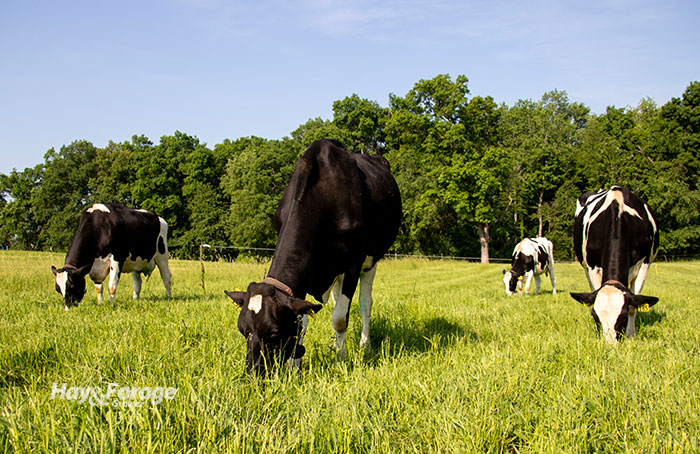Forage is critical to the carbon cycle |
| By Amber Friedrichsen, Associate Editor |
|
|
 The agricultural industry is often under scrutiny for its greenhouse gas emissions — more specifically, its methane emissions from ruminants like cattle. But this methane belongs to a natural cycle that controls its effect on the environment, and a key component of this cycle is forage. In a recent issue of the Miner Agricultural Research Institute’s Farm Report, Gift Omoruyi explains how the biogenic carbon cycle is different from the global carbon cycle. The former process involves the natural recycling of carbon among biological sources like plants, animals, and the soil, whereas the latter accounts for carbon movement from all sources, including fossil fuels, human activity, and the ocean. Omoruyi says the rate at which carbon is released to the atmosphere from nonbiological sources outpaces the ability for it to be sufficiently sequestered. Carbon in the form of methane produced by ruminants, however, is essentially contained within the biogenic cycle and has a much smaller impact on the environment. “The biogenic carbon cycle illustrates that the methane emitted by cows and other ruminant animals does not necessarily add new carbon into the atmosphere but recycles it due to the unique ability of ruminants to break down cellulose,” Omoruyi states. A full circle system A basic description of the complex biogenic cycle starts with plants utilizing carbon from carbon dioxide in the atmosphere to facilitate photosynthesis. This carbon is then fixed to form carbohydrates, including cellulose, which is the main structural carbohydrate in plant cells. The glycosidic bonds in cellulose make it resistant to degradation except by the enzyme cellulase. “Humans and other monogastric animals are unable to digest cellulose because of the absence of cellulase in their gut, but ruminants can break down cellulose through the action of cellulolytic microbes in the rumen and use the energy created for their physiological processes, and for meat, milk, and wool production,” Omoruyi states. A by-product of enteric fermentation of forage in the rumen, carbon dioxide, is then converted to methane and released back into the atmosphere. “The methane stays in the atmosphere for about 12 years after which it is converted back to carbon dioxide and water through a process known as hydroxyl oxidation,” Omoruyi explains. “The carbon dioxide is then reabsorbed by plants during photosynthesis to form cellulose, and so the cycle continues.” More accurate measures While all plants have the capacity to participate in the biogenic carbon cycle, perennial forages — especially perennial pastures — have the added advantage of sequestering carbon in the soil and in plant tissues over an extended growing season year after year. They enhance the overall efficiency and sustainability of the biogenic carbon cycle while providing a consistent feed source for the livestock that are a part of it. With that said, methane emissions from cattle are often measured the same way as all other sources of carbon when calculating greenhouse gas emissions despite having a different, less significant impact on global warming. Thus, the recycling services perennial forages provide are underappreciated and unaccounted for when agriculture’s environmental footprint is compared to that of other industries. The challenge lies in accurately quantifying carbon in the biogenic cycle while recognizing the uniqueness of the system and its components — including forage. Doing so could even the playing field for future environmental action in agriculture and beyond. |
